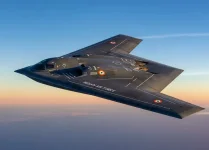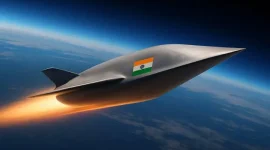- Views: 1K
- Replies: 9

India's strategic defense capabilities reached a significant milestone in 2012 with the first test of the Agni-V Intercontinental Ballistic Missile (ICBM).
Over the past twelve years, the Agni missile series has undergone remarkable advancements, with the recent 2024 testing of the Agni-V Multiple Independently Targetable Re-entry Vehicle (MIRV) variant marking the latest landmark.
The Agni Missile Journey
The Agni missile series was born with the initial Agni-V ICBM test in 2012. This test demonstrated India's ability to strike targets across mainland China. Although initially range-capped at 5,000 km, subsequent modifications have significantly expanded the missile's potential. Analysts suggest that with a lighter payload, the Agni-V's range could reach up to 8,000 km.The year 2015 saw the Agni-V tested from a sealed canister, enhancing operational flexibility and ease of handling. Further user trials by the Strategic Forces Command in 2021 confirmed the missile's production readiness, potentially addressing international concerns regarding ongoing development.
Agni-V MkII: Lighter and Longer-Ranged
India's relentless pursuit of missile technology led to the Agni-V MkII variant. Tested in 2022, this upgraded version incorporated lightweight composite materials and replaced older subsystems.These changes significantly reduced weight, boosting performance and allowing the missile to reach over 7,000 km while carrying a full payload.
MIRV Capability: A Strategic Leap
The Agni series achieved its most prominent milestone yet in 2024 with the testing of the Agni-V MIRV. MIRV technology provides a single missile with multiple warheads, making it far more difficult for adversaries to defend against.India's successful demonstration of MIRV capability, achieved ahead of projected timelines, is a testament to its growing technological prowess and strategic strength.
Beyond the Missiles
The successful Agni-V MIRV test also implies that India has achieved significant progress in warhead miniaturization, advanced guidance and navigation, and the development of reliable individual re-entry vehicles.Reports from organizations such as the Federation of American Scientists (FAS) acknowledge that India's progress has exceeded expectations, with the MIRV demonstration occurring years ahead of their projections.


